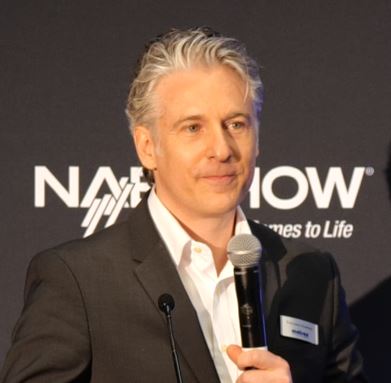Francesco Scartozzi, vice president of sales and business development, Broadcast and Media Group, Matrox Video, discusses how 2023 has seen companies starting to determine what it means to move to the cloud.
What industry trends have particularly stood out for you in 2023, and why?
I’ve noticed two trends: a clear push to the cloud and continued adoption of ST 2110. People want to move to the cloud because they see it as a better vehicle for producing more and more personalised content, and now they’re starting to determine what it means to “move to the cloud.” As for ST 2110, the standard is really taking off now that more people have become skilled at working with it.

What impact are you seeing those trends having on the media and entertainment industry?
There’s an uptick in movement to the cloud, but more than that, there’s an effort on the part of broadcasters and other media companies to better define what that really means. As they think about how they can produce more content in a more compelling way, they are starting to ask the right questions. How can we distribute the workload? How can we be resilient enough to protect our workflows? All these questions lead to a logical conclusion: They need to become more software-centric. And at the heart of it is what the industry really means when they talk about moving to the cloud. They really just want to be more flexible, and the only way to do that is to use standard IT equipment with software that solves a particular problem.
Regarding the growth of ST 2110, let me address the elephant in the room: ST 2110 had a rough start in the industry. Early installations were not easy to get off the ground, largely due to the talent and skill level of the traditional “broadcast engineer.” The industry needed time for these personnel, who spent their days putting together SDI workflows, to acquire network knowledge. Now that many years have passed, and more broadcast personnel have learned crucial networking skills, setting up a high-end ST 2110 environment is easier. We are seeing more tier 1 and tier 2 broadcast facilities adopting ST 2110 — approximately 30% year-over-year growth in adoption.
How do you see those trends developing further in 2024?
Moving workflows to the “cloud” / “software” will result in more content being produced in a more personalised way. Because the cloud enables workflows you can spin up or down, depending on what you want to cover or how you want to monetise, you can see live events being delivered to each viewer in a way that focuses on exactly what they are interested in. This is an example of how the broadcast market is changing, and it’s only possible if we really embrace what the cloud has to offer.
As for the upward trend in ST 2110 adoption, we’re seeing it more and more in sports and entertainment venues. It started with the new SoFi Stadium and Allegiant Stadium as well as refreshed stadiums like Lucas Oil. They all are using ST 2110. The most famous venue, unveiled in 2023, is the Sphere in Las Vegas, where U2 is performing. This has a complete ST 2110 backbone, and Matrox Video is happy to be part of it with our ConvertIP and ConductIP products. This is a trend that will take off in the US venue space as the industry prepares for the FIFA World Cup in 2026. I predict all those venues will be updated to use ST 2110 equipment.
Do you expect to see any new trends within the industry in 2024, and what will they be?
I do see a couple of trends that I believe will be on the rise. It is no surprise that the technology line between broadcast and pro AV has been blurring. We have seen broadcast equipment being used for years in nonbroadcast applications, such as houses of worship and enterprises. We are also now witnessing the need to integrate pro AV gear into certain broadcast workflows. That is where I see the first trend that I believe will continue to pick up steam in 2024. With standards like IPMX, which is an ST 2110 derivative, I believe we will see more and more expansion of IPMX into broadcast, which will naturally give rise to more pro AV gear. The other trend I like to keep an eye on is AI and how the industry can use it to produce better live content. Having said that, just like in the quest to jump to the cloud, we need to first ask ourselves: Why do we believe AI can make live production better? Can it help tell a better story? Can we save money? Once we know what we need and what problem we need to solve, only then should we turn to AI … and use it where it makes sense.







